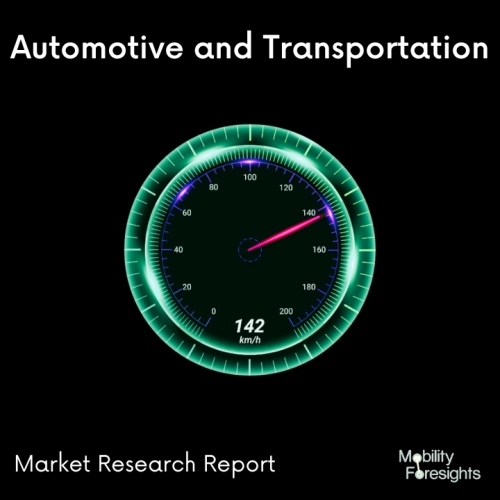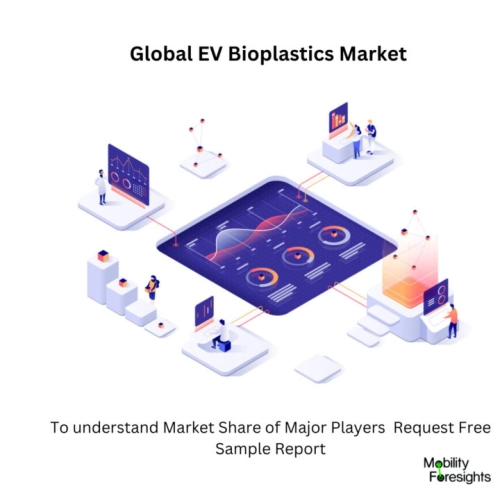
- Get in Touch with Us

Last Updated: Apr 25, 2025 | Study Period: 2024-2030
Plastic trash is a problem that is smothering the world and damaging the ecosystem. Bioplastic is a biodegradable material that comes from renewable sources and can be utilized to solve this issue.
200 million tonnes of plastic are used worldwide each year, making it the third most widely used petroleum derivative. It is polluting and non-biodegradable, and it comes from a non-renewable source (petroleum).
Because they are so ubiquitous, nations like Bangladesh have banned traditional plastic bags; Africa has dubbed them a new "national flower"; and Europe has contemplated taxing them. Additionally, this waste kills marine wildlife and poultry that consume it, creating grave environmental issues like garbage patches.
The use of bioplastics, which involves producing natural polymers from waste agriculture, cellulose, or potato and maize starch, is being promoted as an alternative.
They are known as PHA and are 100% biodegradable, equally resilient, and versatile. They are already used in the food industry, the textile industry, the pharmaceutical industry, and the container and packaging market, and biopolymers are already gaining popularity in cities across Europe and the United States for environmental reasons.
10% of the European plastics market's needs should be met by this product.
These polyesters are created by a variety of bacterial strains digesting raw vegetable sources. PHAs can be utilized, among many other things, in injection molding to create automotive components. PHA (polyhydroxyalkanoate) is specifically taken out of bacteria like pseudomonas. In its natural state, it resembles clear kitchen film, but with the distinction that it is a true bioplastic.

The Global EV bioplastics market accounted for $XX Billion in 2023 and is anticipated to reach $XX Billion by 2030, registering a CAGR of XX% from 2024 to 2030.
The Javits Center will host LUXE PACK New York, where Eastman will showcase its most recent developments. The Eastman Trva engineering bioplastic and Cristal EV bioplastics EV600 copolyester, two novel solutions that solve the global problem of plastic waste, will be covered.
Treva is a cellulose-based plastic for opaque and colored packaging that performs better and has less of an impact on the environment. In some cases, it can act as a straight replacement for ABS and provide room for downgauging. Its bio content of more than 40% helps brands to move away from substances listed on Proposition 65 and toward sustainability obligations.
| Sl no | Topic |
| 1 | Market Segmentation |
| 2 | Scope of the report |
| 3 | Abbreviations |
| 4 | Research Methodology |
| 5 | Executive Summary |
| 6 | Introduction |
| 7 | Insights from Industry stakeholders |
| 8 | Cost breakdown of Product by sub-components and average profit margin |
| 9 | Disruptive innovation in the Industry |
| 10 | Technology trends in the Industry |
| 11 | Consumer trends in the industry |
| 12 | Recent Production Milestones |
| 13 | Component Manufacturing in US, EU and China |
| 14 | COVID-19 impact on overall market |
| 15 | COVID-19 impact on Production of components |
| 16 | COVID-19 impact on Point of sale |
| 17 | Market Segmentation, Dynamics and Forecast by Geography, 2024-2030 |
| 18 | Market Segmentation, Dynamics and Forecast by Product Type, 2024-2030 |
| 19 | Market Segmentation, Dynamics and Forecast by Application, 2024-2030 |
| 20 | Market Segmentation, Dynamics and Forecast by End use, 2024-2030 |
| 21 | Product installation rate by OEM, 2023 |
| 22 | Incline/Decline in Average B-2-B selling price in past 5 years |
| 23 | Competition from substitute products |
| 24 | Gross margin and average profitability of suppliers |
| 25 | New product development in past 12 months |
| 26 | M&A in past 12 months |
| 27 | Growth strategy of leading players |
| 28 | Market share of vendors, 2023 |
| 29 | Company Profiles |
| 30 | Unmet needs and opportunity for new suppliers |
| 31 | Conclusion |
| 32 | Appendix |